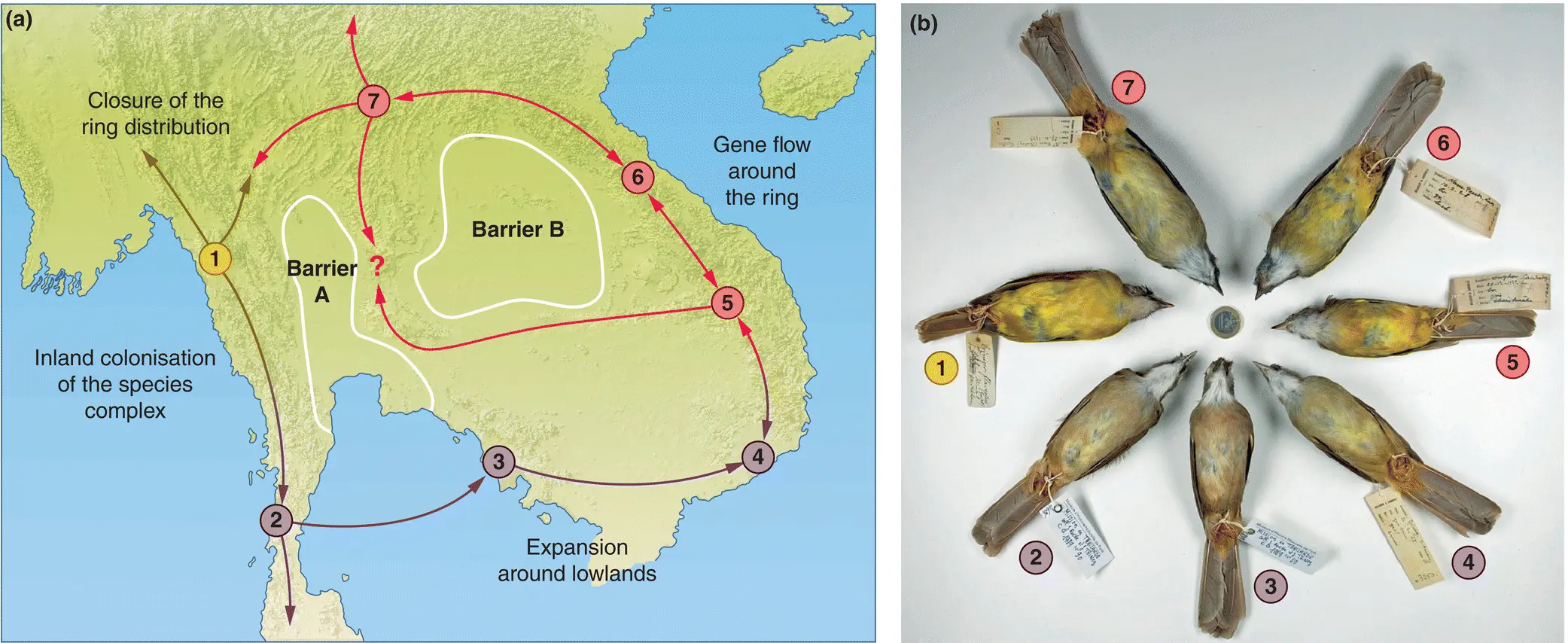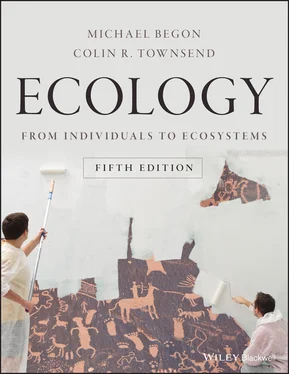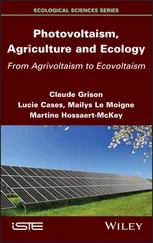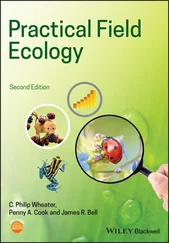ring species – perfect examples of speciation in action, but why so rare?
That speciation is a process rather than an event is beautifully illustrated by the existence of ring species. In these, races or subspecies of a species that fall short of being full species themselves (i.e. distinct forms that are nonetheless capable of producing fertile hybrids) are arranged along a geographic gradient in such a way that the two ends of the gradient themselves meet, hence forming a ring, and where they do, they behave as good species despite being linked, back around the ring, by the series of interbreeding races. Thus, what would normally be a temporal sequence of events, that we can only presume to have happened, becomes frozen in space. That the phenomenon is theoretically feasible has been demonstrated using mathematical models (e.g. de Brito Martins & de Aguiar, 2016). But actual examples are rare, and several that have been proposed in the past have been called into question by modern molecular studies, leading Pereira and Wake (2015) to wonder whether ring species are an unfulfilled promise or, worse still, wish‐fulfilment fantasy.
The classic example is the extraordinary case of two species of sea gull. The lesser black‐backed gull ( Larus fuscus ) originated in Siberia and colonised progressively to the west, forming a chain or cline of different forms, spreading from Siberia to Britain and Iceland. The neighbouring forms along the cline are distinctive, but were assumed to hybridise readily in nature. Neighbouring populations are regarded as part of the same species and taxonomists give them only ‘subspecific’ status (e.g. L. fuscus graellsii , L. fuscus fuscus ). Populations of the gull have, however, also spread east from Siberia, again forming a cline of freely hybridising forms. Together, the populations spreading east and west encircle the northern hemisphere. They meet and overlap in northern Europe. There, the eastward and westward clines have diverged so far that it is easy to tell them apart, and they are recognised as two different species , the lesser black‐backed gull ( L. fuscus ) and the herring gull ( L. argentatus ). Moreover, the two species do not hybridise: they have become true biospecies. In this remarkable example, then, we can see how two distinct species seem to have evolved from one primal stock, and that the stages of their divergence remain frozen in the cline that connects them.
However, modern molecular techniques to determine genetic relationships have revealed a more complex picture. Thus, while ancestral populations expanded in a roughly circular fashion, there have been intermittent periods of allopatric fragmentation and subsequent range expansion, leading to areas of secondary contact where hybridisation currently occurs. Population divergence, therefore, proceeded at least partly in allopatry, not exclusively through isolation by distance throughout a contiguous range, as the ring species concept requires. Moreover, adjacent subspecies have been found not necessarily to be each other’s closest relatives and evidence is lacking of closure of the circumpolar ring by colonisation of Europe by North American herring gulls, a cornerstone of the ring species concept (Martens & Packert, 2007).
A more convincing example involves bulbuls in the genus Alophoixus in montane habitats of the Indo‐Malayan bioregion. Fuchs et al . (2015) have shown that diversification is consistent with most criteria expected for ring species ( Figure 1.10a). First, molecular analysis shows that the seven taxa ( Figure 1.10b) are all descendants of a single ancestral species, and probably derive from a single colonisation from Sundaland. Second, neighbouring taxa are most closely related, suggesting that taxa have diverged from a stepping stone colonisation of the high‐elevation forest around Thailand’s lowlands (lowland ‘barriers’ A and B in Figure 1.10a). The current distribution suggests that divergence can be explained by isolation by distance, as assumed by the ring species concept (but also, partly, by periods of geographic isolation that probably occurred during climatic cycles following initial diversification of the complex). Third, gene flow between neighbouring taxa suggests that divergence and secondary contact between taxa around the ring have resulted in genetic intergradation. And fourth, demographic analyses indicate a recent expansion and geographic overlap of the oldest taxon (1) and its most distant relative (7), leading to closure of the ring. However, hybrids sampled at the terminus of the ring (where taxon 1 meets taxon 7) indicate that divergence has not been sufficient for complete reproductive isolation to evolve.

Figure 1.10 Closure of a ring distribution of bulbul morphotypes.(a) Distribution of Alophoixus bulbuls in the Indo‐Malayan bioregion. Taxa composing the Alophoixus ring are represented by circles (colours distinguish three currently recognised species); single arrows represent colonisation around the barrier; double arrows represent zones of genetic intergradation; closure of the ring (involving taxa 1 and 7) is shown at the top left (the question mark indicates a possible secondary contact at the mid‐ring involving taxa 5 and 7). (b) Eco‐morphotypes: (1) A. flaveolus , (2) A. ochraceus ochraceus , (3) A. o. cambodianus , (4) A. o. hallae , (5) A. pallidus khmerensis , (6) A. p. annamensis and (7) A. p. henrici .
Source : From Fuchs et al . (2015), after Pereira & Wake (2015). (b) Photo credit: A. Previato, MNHN.
allopatric speciation without secondary contact
It would be wrong to imagine that all examples of speciation conform fully to the orthodox picture described in Figure 1.8. In fact, there may never be secondary contact. This would be pure ‘allopatric’ speciation; that is, with all divergence occurring in subpopulations in different places. This seems particularly likely for island populations and helps explain the preponderance of endemic species (those found nowhere else) on remote islands.
1.3.3 Sympatric speciation
Furthermore, the advent of modern molecular techniques has spurred interest in the view that an allopatric phase may not be necessary: that is, ‘sympatric’ speciation is possible, with subpopulations diverging despite not being geographically separated from one another. Sympatric speciation has long fascinated evolutionary biologists because it sets diversifying selection against the tendency of sexual reproduction to homogenise populations. There are few truly convincing cases in nature, and indeed it is to be expected that examples of such a process will be difficult to identify because, for most groups, range maps are incomplete, the patterns of habitat use are poorly known and phylogenies do not include all species (Santini et al ., 2012). Once again, however, mathematical models provide a way of testing the viability of alternative speciation scenarios and suggest the criteria that need to be satisfied (Bird et al ., 2012). There are at least five criteria for inferring that a particular case is best explained by sympatric speciation – four proposed by Coyne and Orr (2004): (1) the two species must have largely overlapping geographical distributions; (2) speciation must be complete; (3) the two species must be sister species (descended from a common ancestor); and (4) the biogeographic and evolutionary history of the groups must make the existence of an allopatric phase ‘very unlikely’; and a fifth, based on a population genetics rather than biogeographic perspective: (5) evidence must support panmixia of the ancestral population (i.e. mating must have been possible between all potential partners) (Fitzpatrick et al ., 2008.
Читать дальше













